Kasuga Taisha in Nara, one of the country’s foremost shrines, is having its twenty-year renewal at the moment, and since the four honden are being rebuilt and repainted, the kami have been taken out to temporary quarters. It means that visitors have a rare chance to go into the usually off-limits Sanctuary where the kami normally resides. To mark the occasion, ABC television channel ran a short programme showing a couple guided round the shrine by a priest.
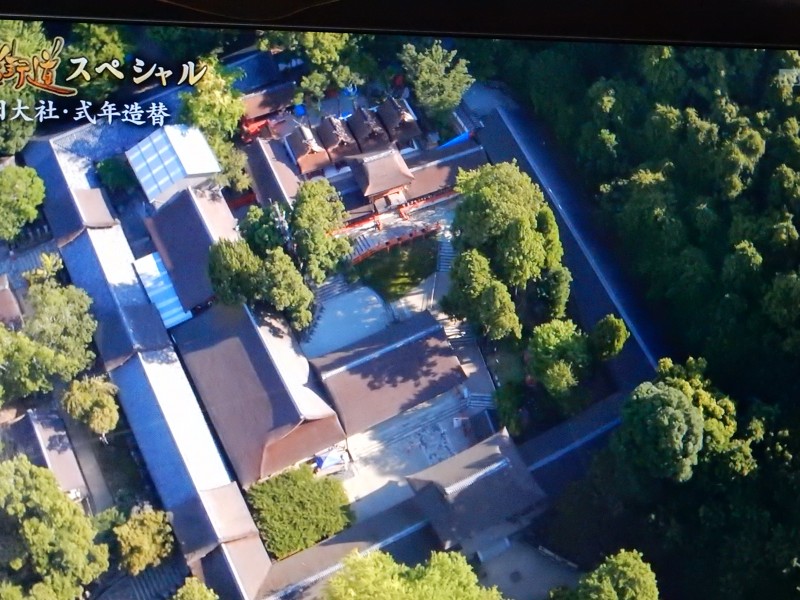
Aerial view of the main Kasuga complex. It is set in a wooded area next to the famous deer park, and there are 61 subshrines in all.
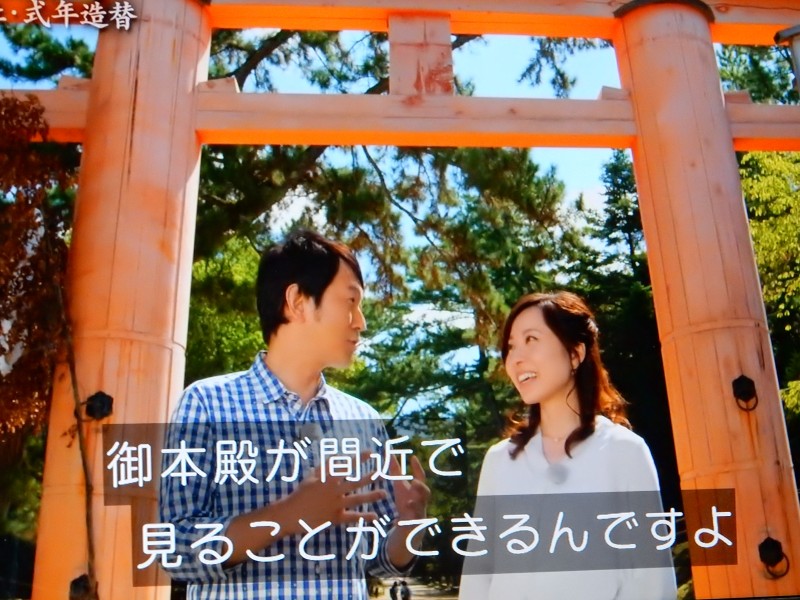
The two visitors express excitement at being able to see the honden.
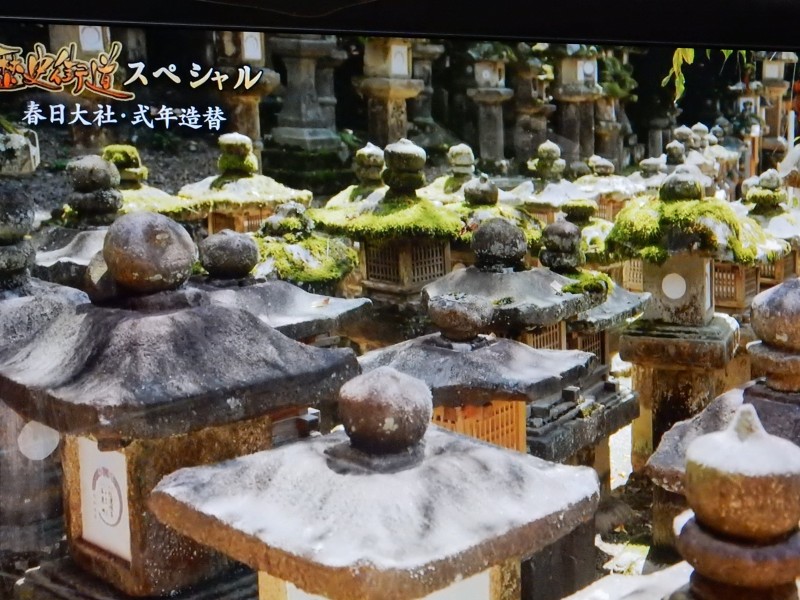
On the approach are rows of stone lanterns, donated by people in the past in hope of ‘worldly benefit’.
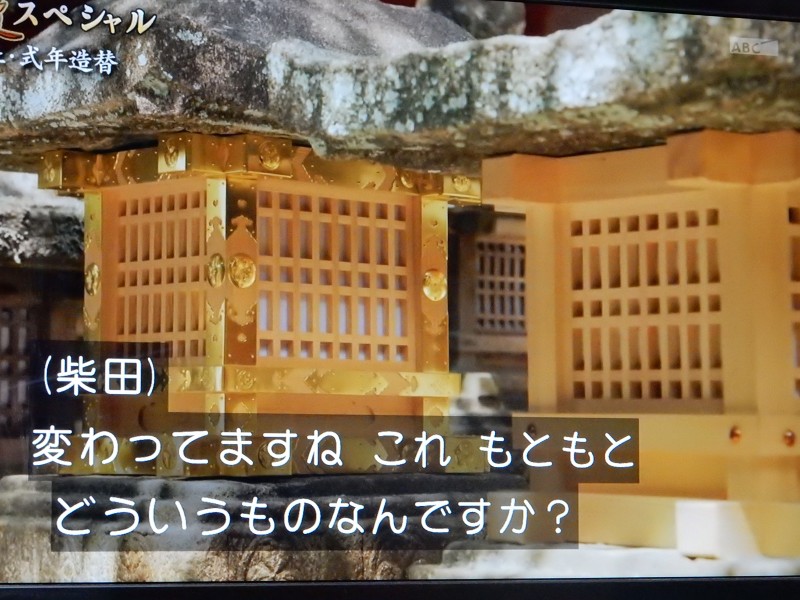
These ‘golden lanterns’ are rather special, donated by Tokugawa Ieyasu for a young relative
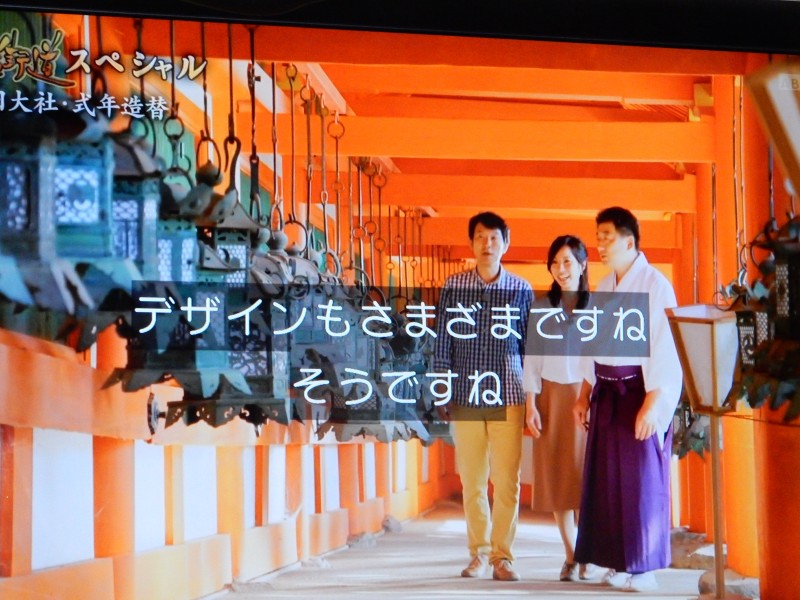
Inside the shrine are some 1000 hanging lanterns. ‘There are various designs,’ one of the visitors notes.The lanterns are lit up for the special Manto Matsuri at Obon.
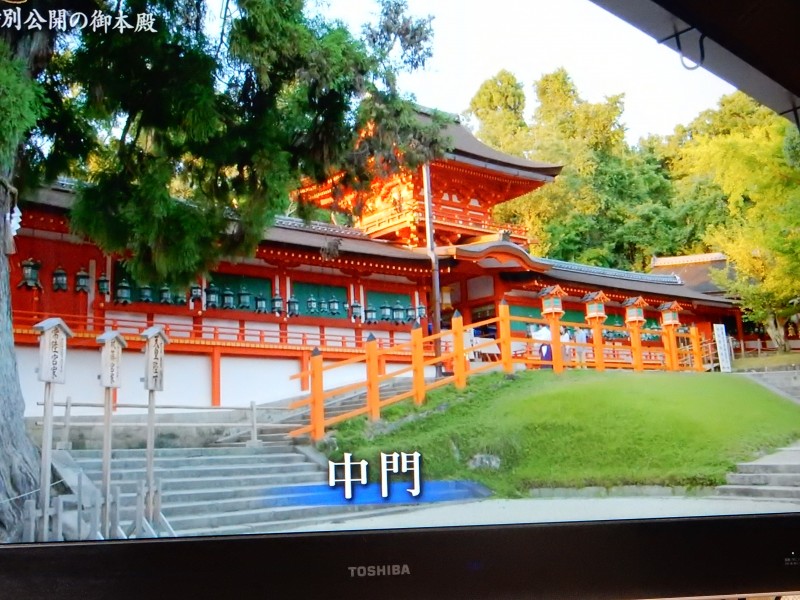
The Chumon gate, normally closed so as to prevent access to the honden.
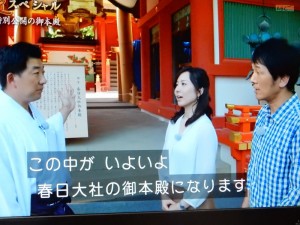
Finally the couple are led nto the most sacred area of the shrine, normally off-limits to all but the priests.
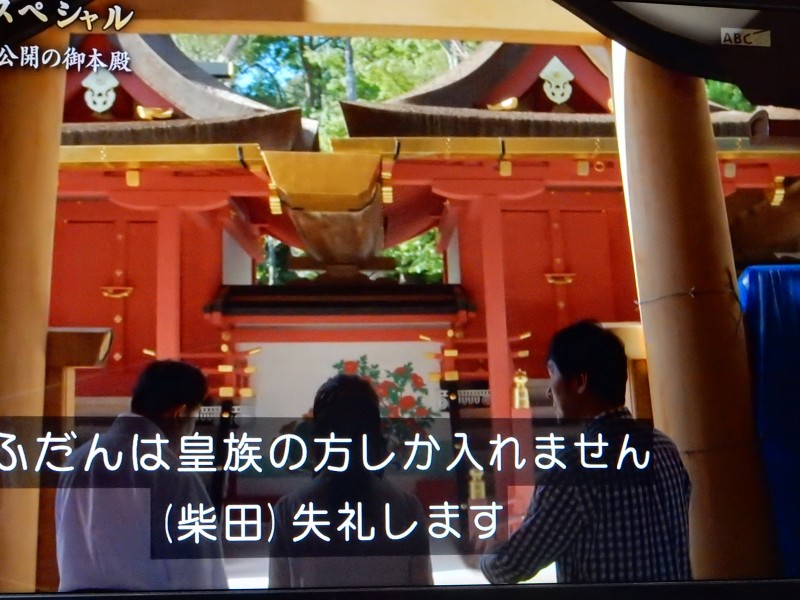
The restored honden are immaculate in their new coats of paint.
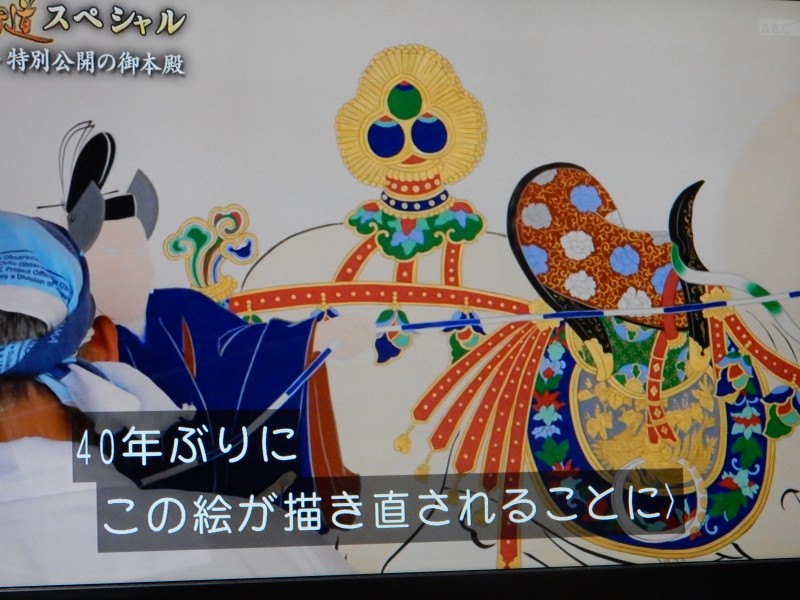
Pictures too have been restored, first time for forty years.
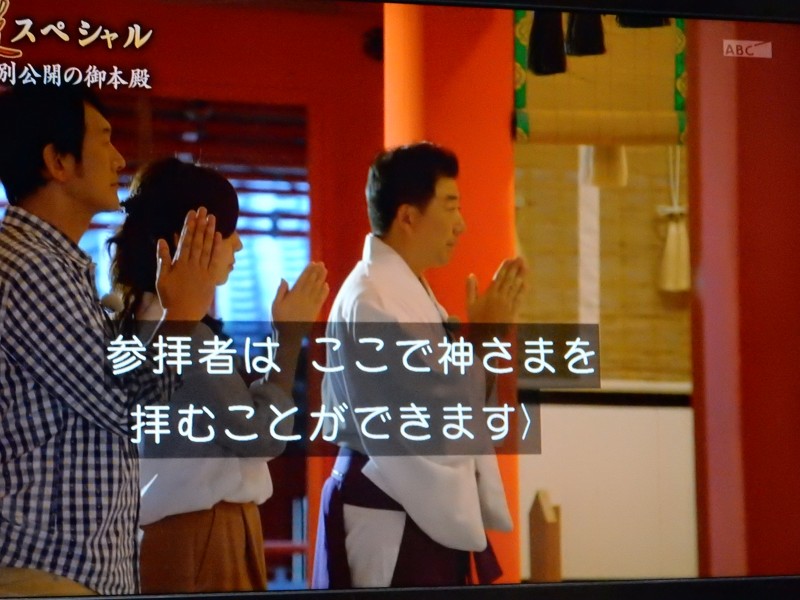
To the side of the honden are the temporary quarters of the kami, to whom the group make their prayers.
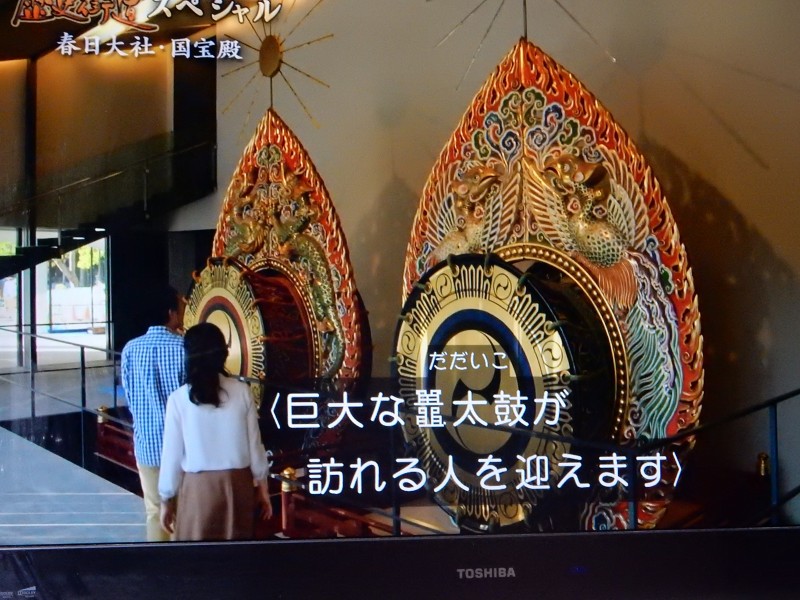
Some of the treasures in the Kasuga museum include these splendid and huge taiko drums donated at the time of Hideyoshi
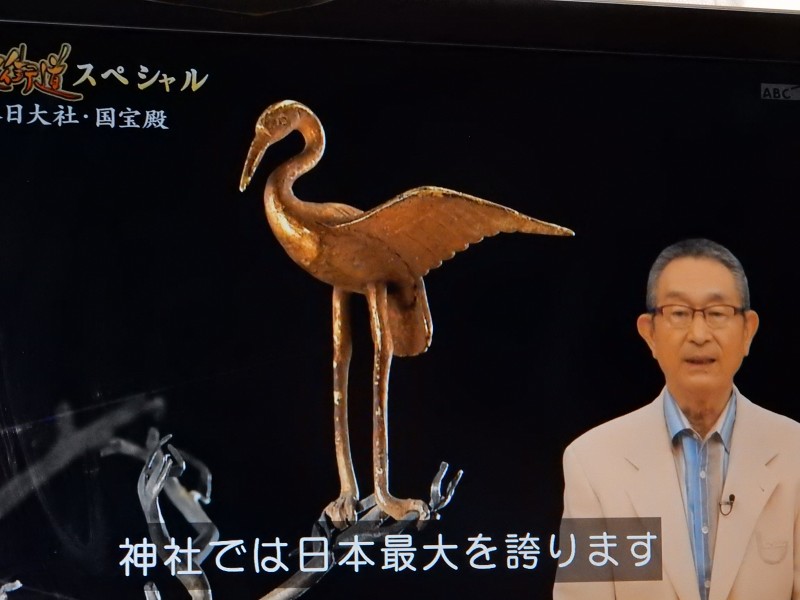
This splendid bird must have been seen as divine in ancient times, flying gracefully and mysteriously between worlds.
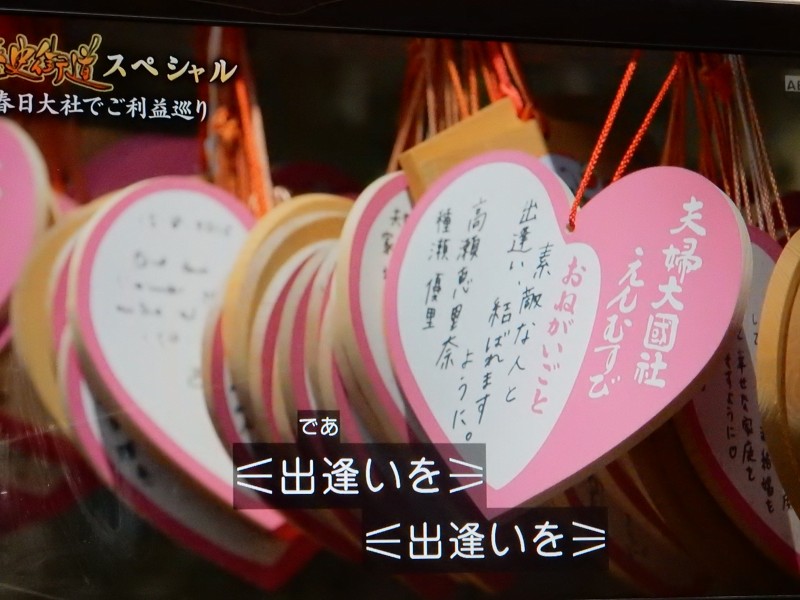
One of Kasuga’s subshrines boasts a popular ‘enmusubi collection of heart ema.
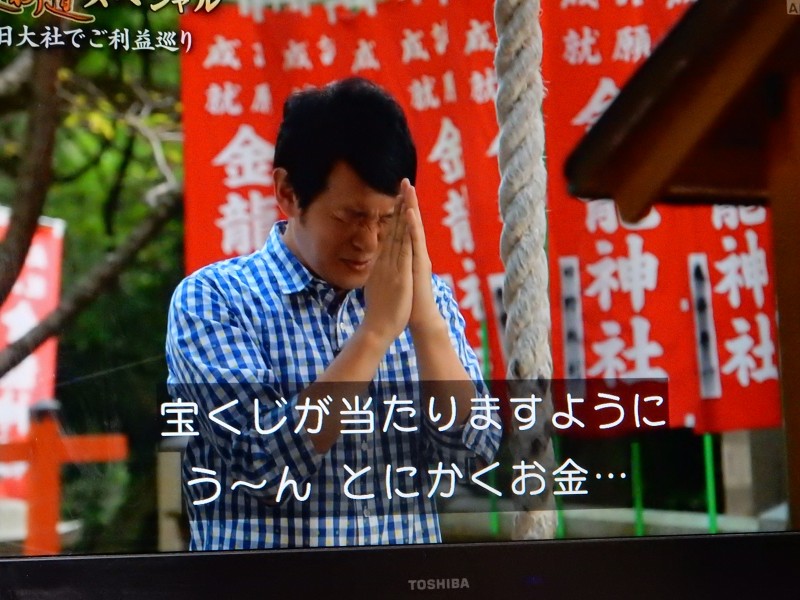
The young man however preferred to head for another of the subshrines where he earnestly prayed for winning the lottery, or at any rate getting lots of money.
*******************
For a detailed description of Kasuga Taisha, see p. 160 in Shinto Shrines: A Guide to the Sacred Sites of Japan’s Ancient Religion by Joseph Cali and John Dougill

Leave a Reply